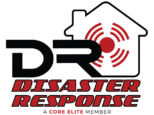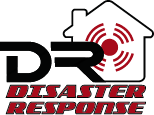Insurance is a fact of modern life. From property to auto, life to health, insurance seems to always be a topic of conversation. I wanted to write a bit about something we see constantly in our line of work, the dreaded property damage claim!
Home insurance helps protect you, your possessions and your property. I know sometimes I fall into the trap of thinking “it won’t happen to me”. When it comes to your property that’s dangerous thinking. Murphy’s law seems to be true, it’s just a matter of time before something goes wrong. Your home has so many working parts, plus exposure to the elements. From a tree falling on your roof in a wind storm, to a dishwasher supply line leaking and causing water damage, it happens more often than you’d think. So when the inevitable happens and you come home from vacation to your flooded house, what do you do!?
I want to talk about mitigation. What the heck does that mean? The definition of mitigation is, the act of making a condition or consequence less severe. Your home owner’s policy covers a wide variety of damages to your home, but you have a responsibility to mitigate the damage. It is important as a property owner to document your damage with photographs or video, and to immediately begin loss mitigation procedures yourself – or hire a qualified contractor to do this on your behalf. It is totally inappropriate for your insurance company to put off mitigation while waiting for your insurance claims representative to arrive on the scene to evaluate your loss. By that time, additional damage may occur due to exposure to weather or moisture, and gives microorganisms time to grow. The additional or subsequent damage caused by the waiting time may not be covered by your insurance. Loss mitigation is defined by insurance policies as “reasonable and prudent measures designed to preserve, protect and secure property from further damage”.
Some common types of property damage mitigation include:
- Removing fallen trees or branches from your home
- Covering the damaged area(s) of your home with tarps to prevent further wind or water damage
- Turning off your water and stopping a leak
- Extracting water and drying out your home




